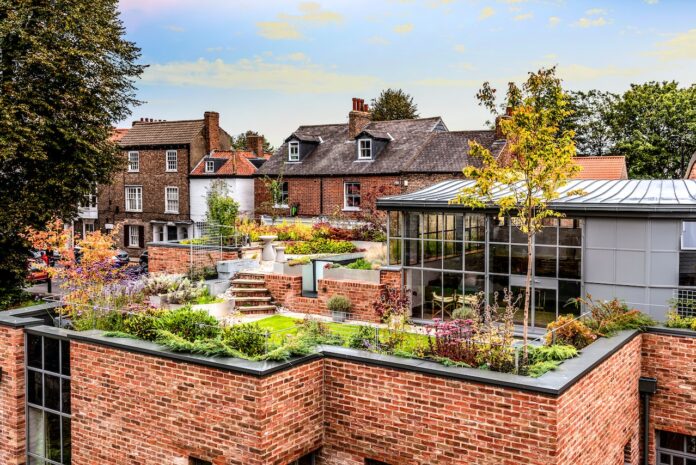The world of home renovations has witnessed significant transformations over the years. From adding space to sprucing up interiors, home renovations are as much about functionality as they are about aesthetics. Modern architecture and design practices have brought in several innovations, making renovating a home more exciting, sustainable, and tailored to individual preferences. Here’s an exploration of the latest architectural advancements that are revolutionizing the home renovation industry.
1. Sustainable Materials and Design
One of the most prominent architectural innovations has been the emphasis on sustainability. Homeowners and architects alike are focusing on using sustainable materials, from reclaimed wood to recycled metals and bio-based insulations. These not only reduce the environmental footprint of the renovation but also bring a unique charm and story to the home’s interior and exterior.
2. Open Floor Plans
An open floor plan, while not a new concept, has been redefined in recent years. With the idea of creating more communal spaces, walls are being torn down in favor of large, multi-use areas. This allows for greater light penetration, and a sense of spaciousness, and fosters a more social living environment.
3. Multi-Functional Spaces
In the modern era where space is at a premium, multi-functional spaces are gaining popularity. Rooms that can seamlessly transition from an office during the day to a guest room at night, or kitchen counters that can also serve as a workspace, are examples of this trend.
4. Incorporation of Technology
Smart homes are no longer just a fancy concept seen in sci-fi movies. Integrating technology into home renovations allows homeowners to have control over lights, thermostats, security, and more, directly from their smartphones. This melding of architecture with technology makes homes more efficient and life more convenient.
5. Modernizing Traditional Elements: Shaker Doors and More
While it’s essential to look forward and innovate, there’s also a significant movement to preserve and modernize traditional architectural elements. One such example is the resurgence of “shaker doors”. With their simplistic design and clean lines, shaker doors fit perfectly in the modern home, adding a touch of tradition and elegance. The beauty of these doors is their versatility; they can be painted in bold, contemporary colors or stained to show the natural wood grain.
6. Expansive Glass Features
Maximizing natural light has become a focal point in contemporary home renovation. The use of expansive glass features, such as large windows, glass walls, or sliding doors, not only illuminates the home but also brings in the outdoors, creating a seamless transition between the inside and the surrounding environment.
7. Rooftop Gardens and Green Roofs
With the growing emphasis on sustainability and a direct connection with nature, rooftop gardens and green roofs are becoming increasingly popular. These spaces not only offer a retreat in urban settings but also provide insulation, improve air quality, and can even serve as a source of home-grown vegetables and herbs.
8. Adaptive Reuse
This concept revolves around taking an old structure or space and giving it a new purpose. It could mean transforming an old barn into a modern living space or converting a garage into a fully-equipped home office. Adaptive reuse not only preserves historical elements but also offers a unique character to the renovated space.
9. Hidden Storage Solutions
The architectural approach to storage has evolved. Instead of bulky cabinets and wardrobes, architects and designers are coming up with hidden storage solutions. Whether it’s drawers inside staircases, pull-out cabinets in kitchens, or recessed shelves in walls, the idea is to minimize clutter and maximize space efficiency.
10. Biophilic Design
This architectural trend emphasizes the connection between nature and living spaces. Through the use of natural materials, colors, patterns, and even the incorporation of actual plants and water features, the biophilic design seeks to bring the calming and rejuvenating aspects of nature indoors.
11. Integrating Indoor and Outdoor Spaces
One of the recent innovations in architectural design is the blurring of lines between indoor and outdoor spaces. Home renovations now often include features like retractable walls, large sliding doors, and even outdoor kitchens. This seamless transition not only extends the living space but also allows homeowners to enjoy the best of both worlds. Whether it’s an extended deck that feels like an extension of the living room or a sunroom that brings the outdoor views in, these designs ensure that residents can experience nature without compromising on comfort.
12. Personalized Home Wellness Zones
The importance of health and well-being has been re-emphasized in recent years, prompting homeowners to incorporate wellness zones within their homes. These aren’t just limited to home gyms. Think meditation nooks bathed in natural light, spa-like bathrooms with steam showers and soaking tubs, or even specialized rooms for practices like yoga or Pilates. By integrating these wellness spaces, homes become sanctuaries, offering a respite from the bustling world outside and a place to rejuvenate the mind, body, and soul.
In Conclusion
Home renovations are not just about changing the aesthetics of a space; they’re about enhancing the quality of life of its inhabitants. With these architectural innovations, homeowners can enjoy homes that are sustainable, functional, and beautiful. As trends continue to evolve, one thing is clear: Architecture and design will continue to push boundaries, ensuring that our living spaces are always in tune with our changing needs and desires.
Help keep news FREE for our readers
Supporting your local community newspaper/online news outlet is crucial now more than ever. If you believe in independent journalism, then consider making a valuable contribution by making a one-time or monthly donation. We operate in rural areas where providing unbiased news can be challenging. Read More About Supporting The West Wales Chronicle
























Media:https://www.facebook.com/photo.php?fbid=10163518893604466&set=p.10163518893604466&type=3
Media:https://www.facebook.com/photo.php?fbid=10163518893339466&set=p.10163518893339466&type=3
Media:https://www.facebook.com/photo.php?fbid=10163518892944466&set=p.10163518892944466&type=3
Media:https://www.facebook.com/photo.php?fbid=10163518892779466&set=p.10163518892779466&type=3
Comments are closed.